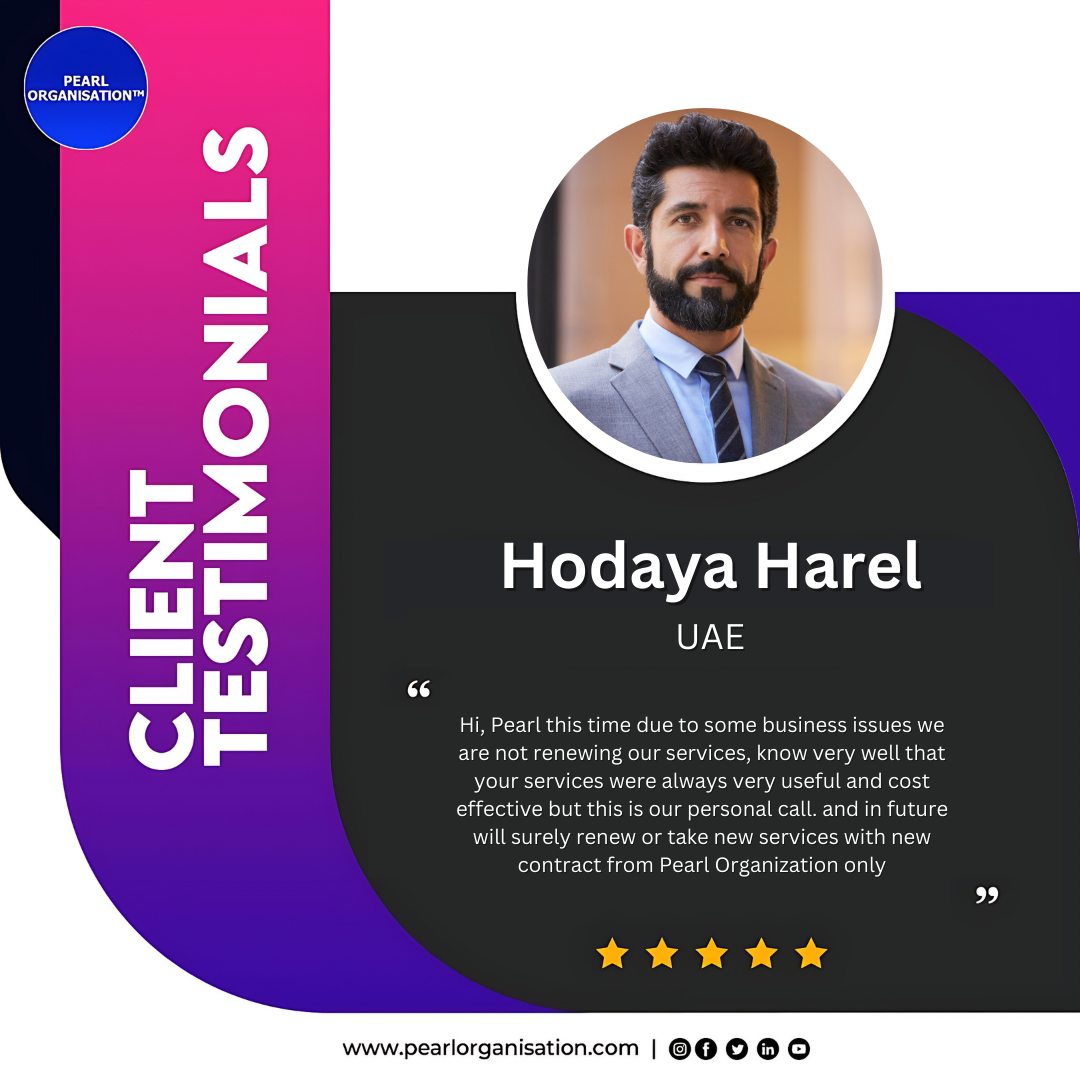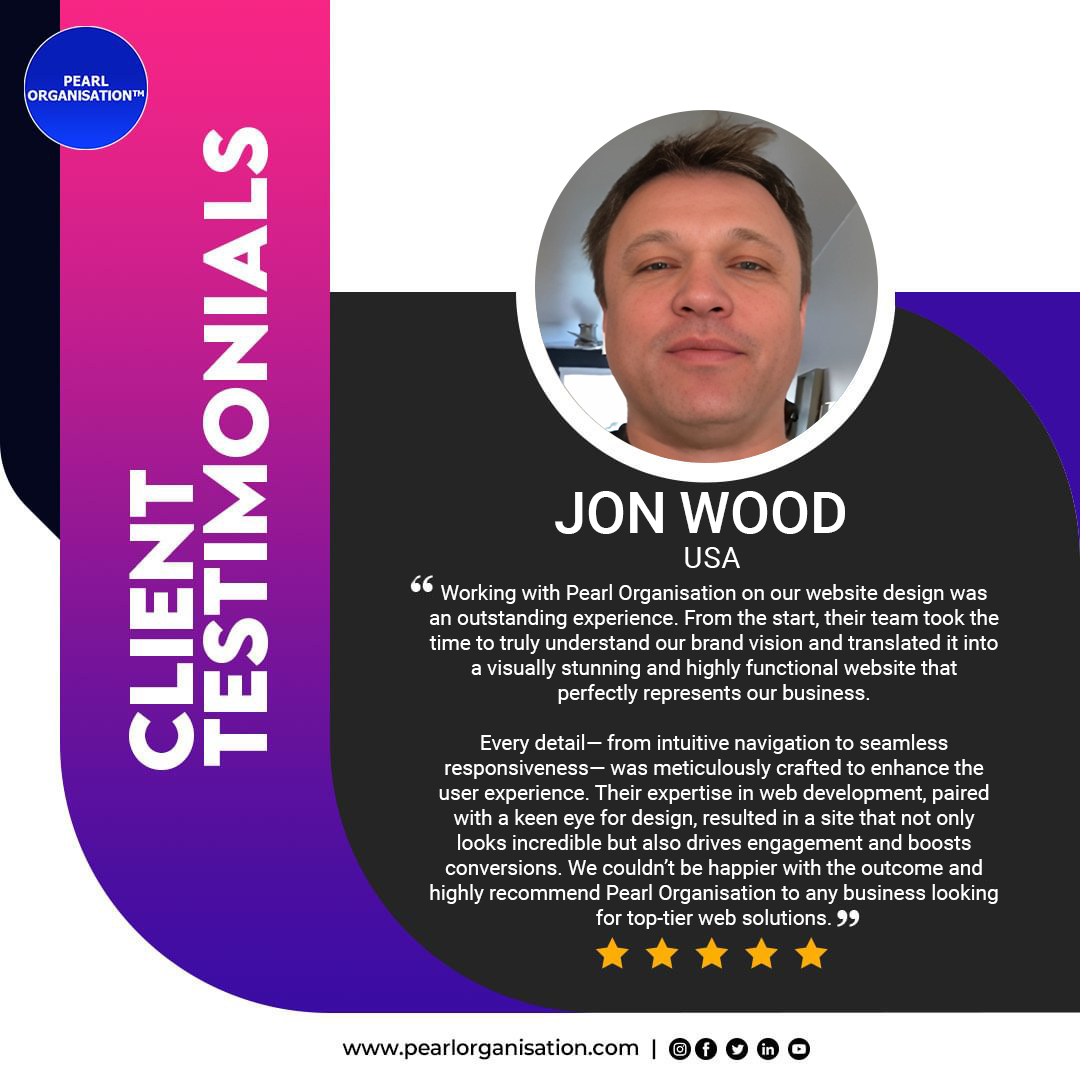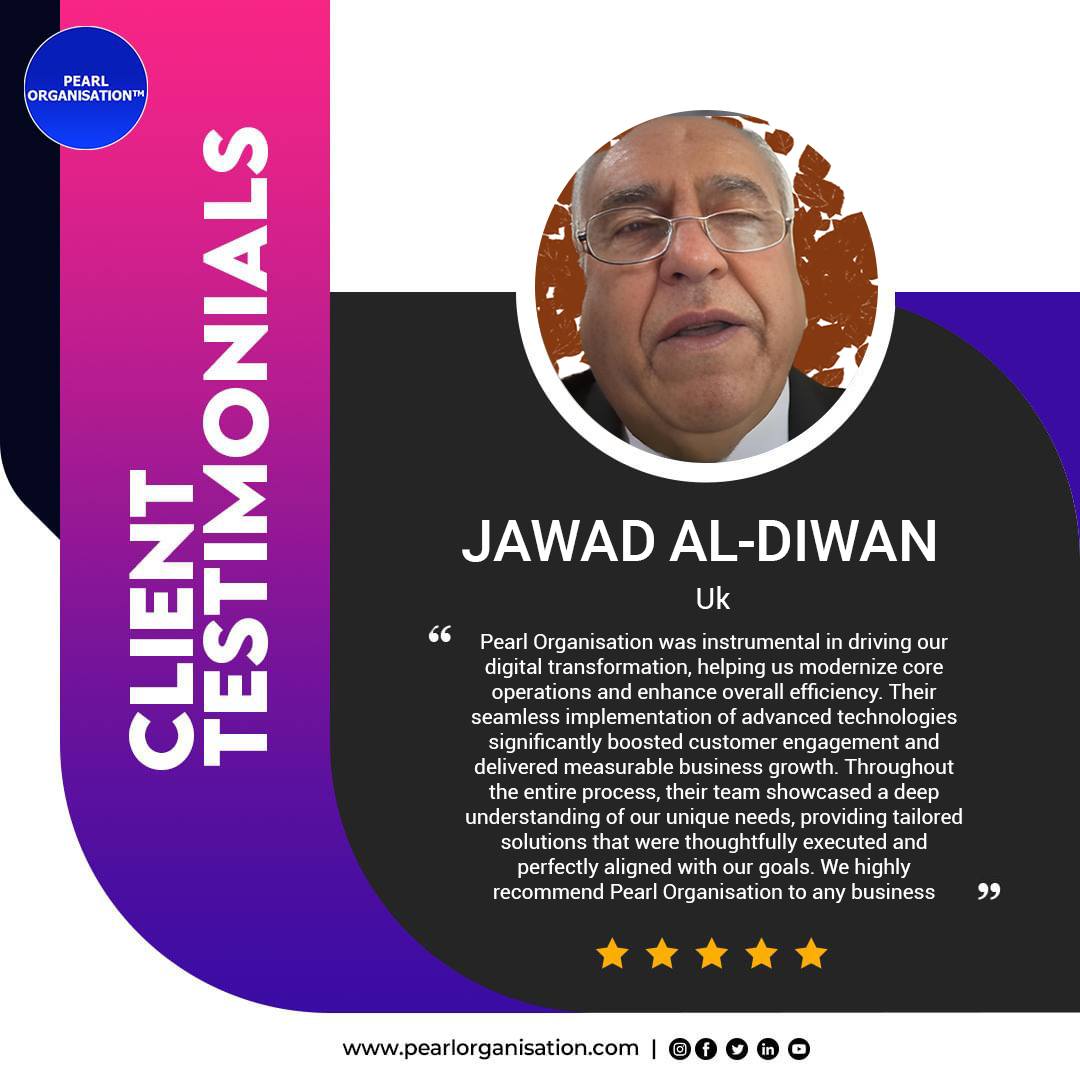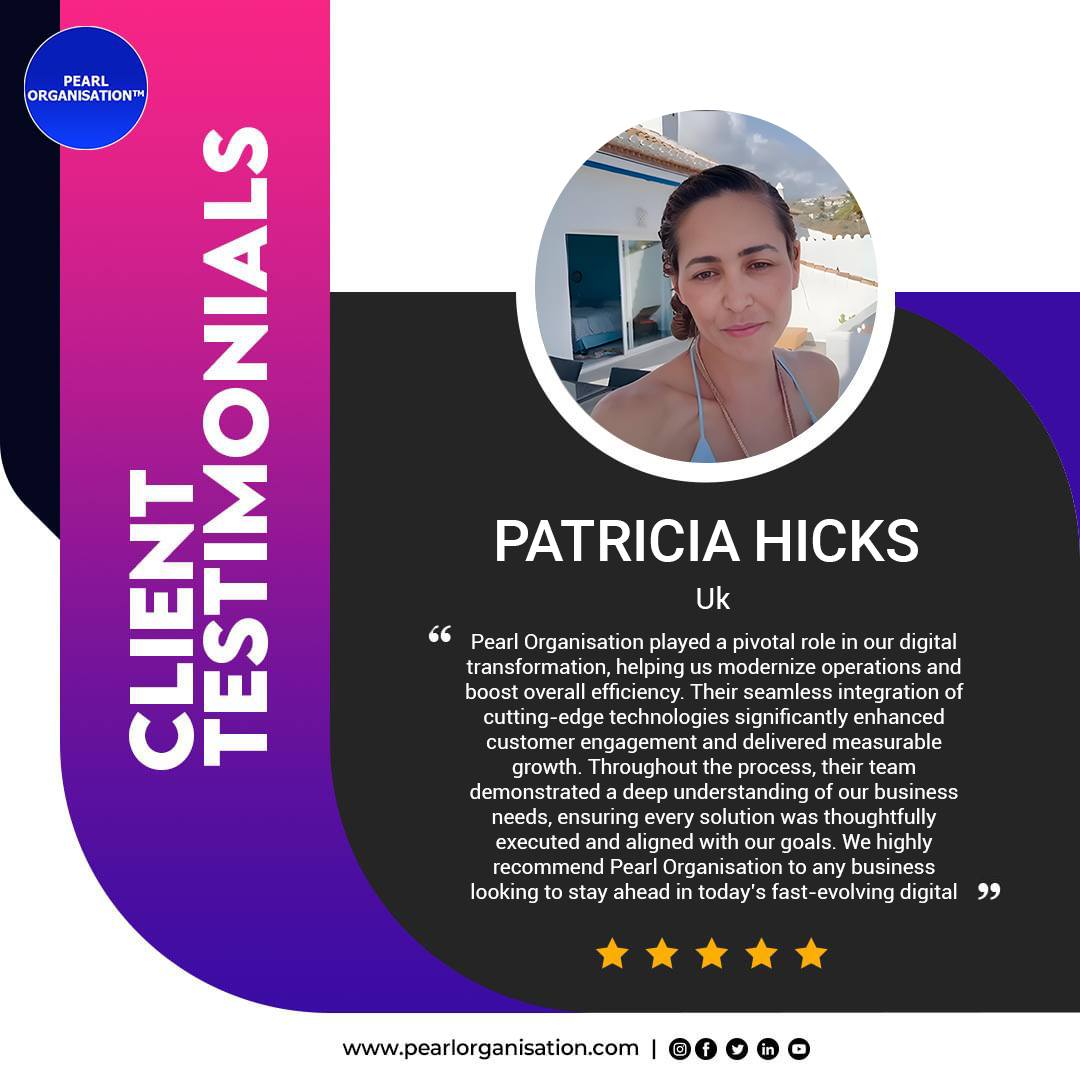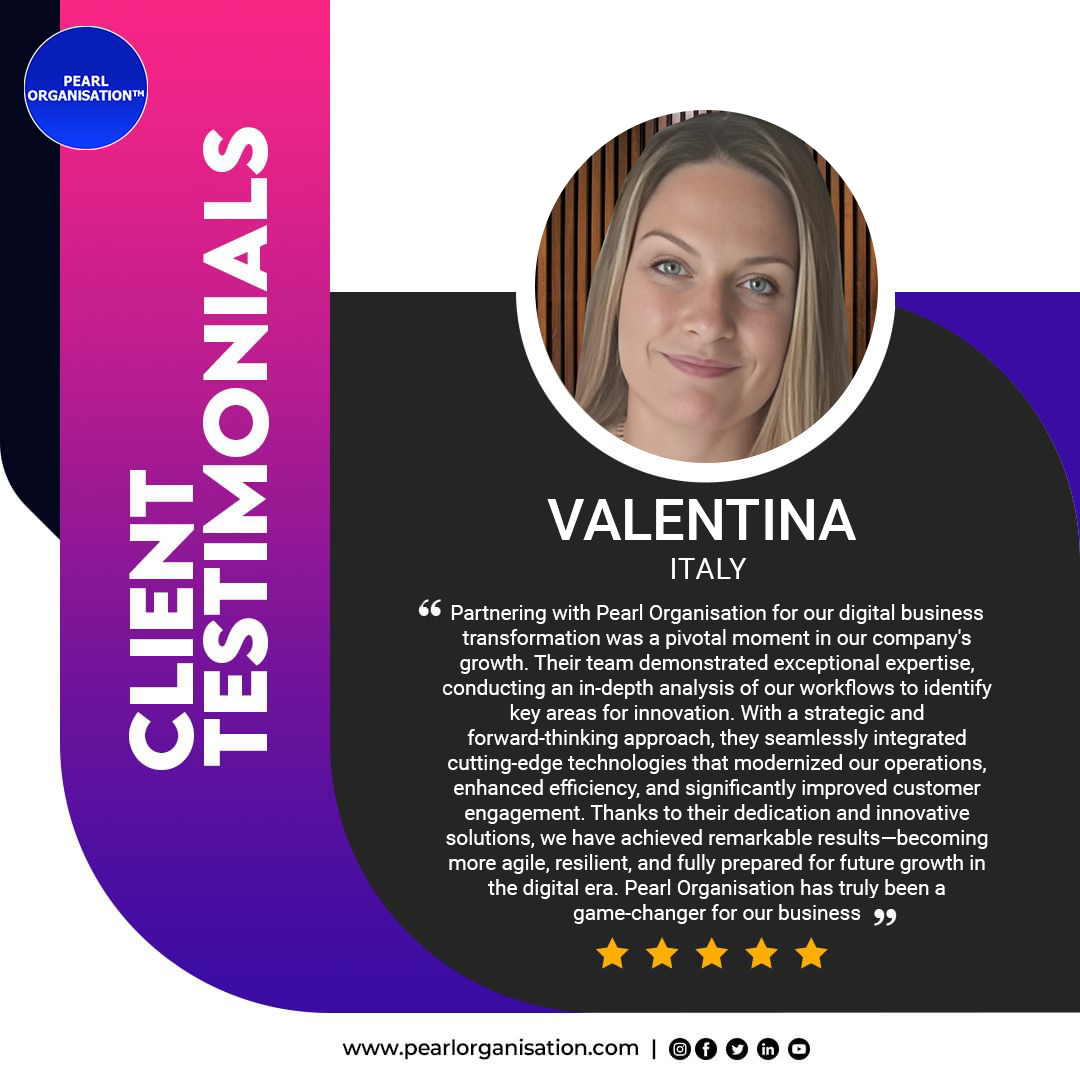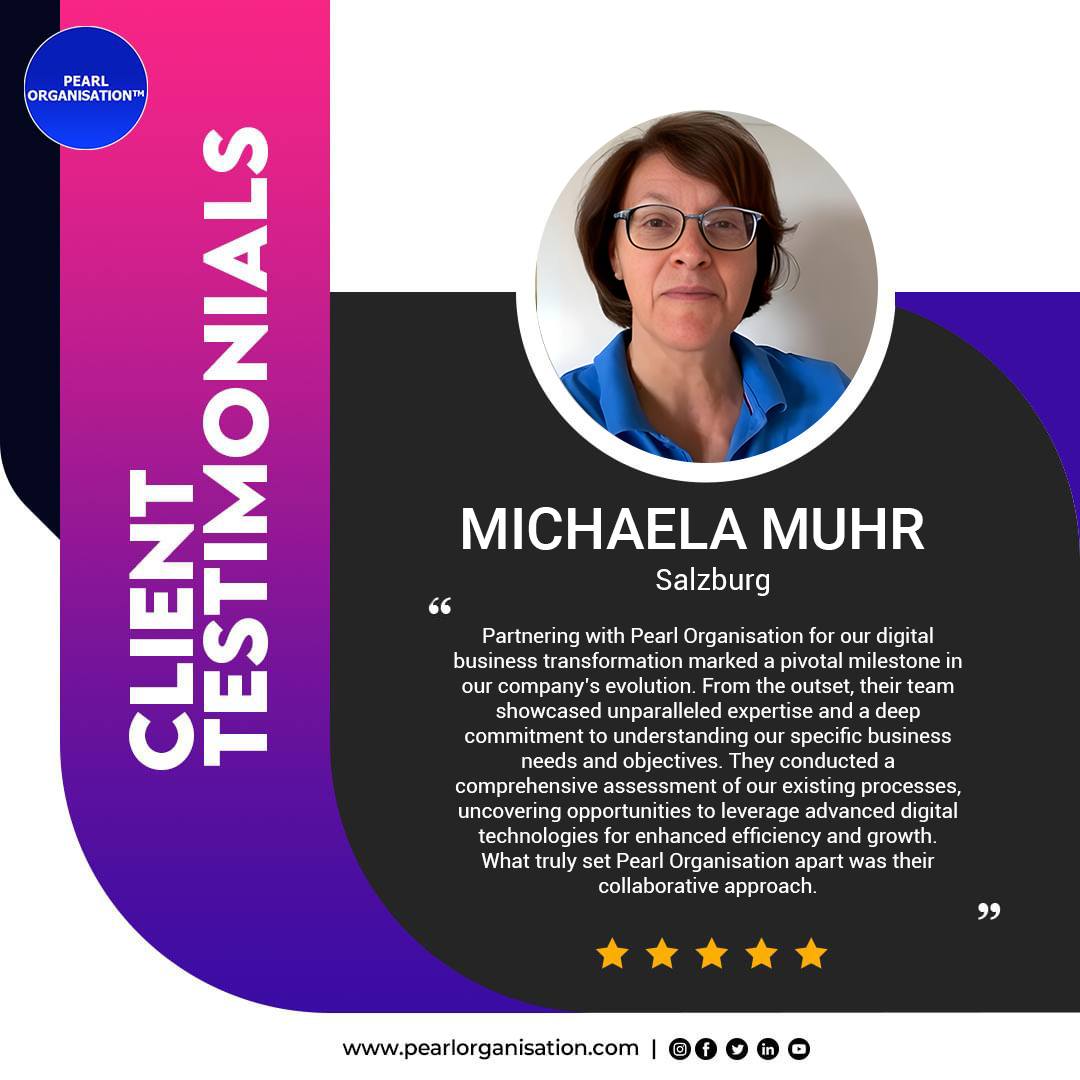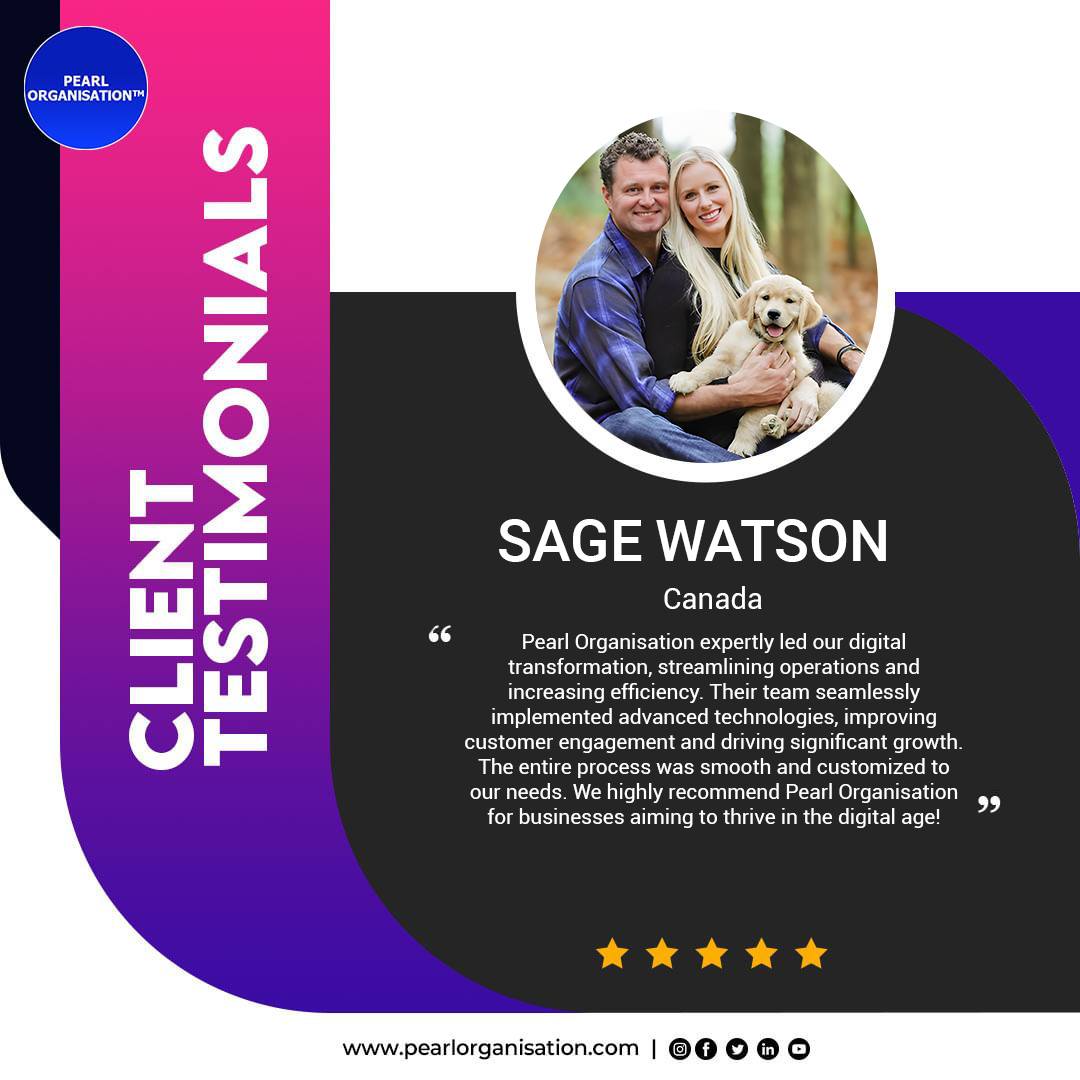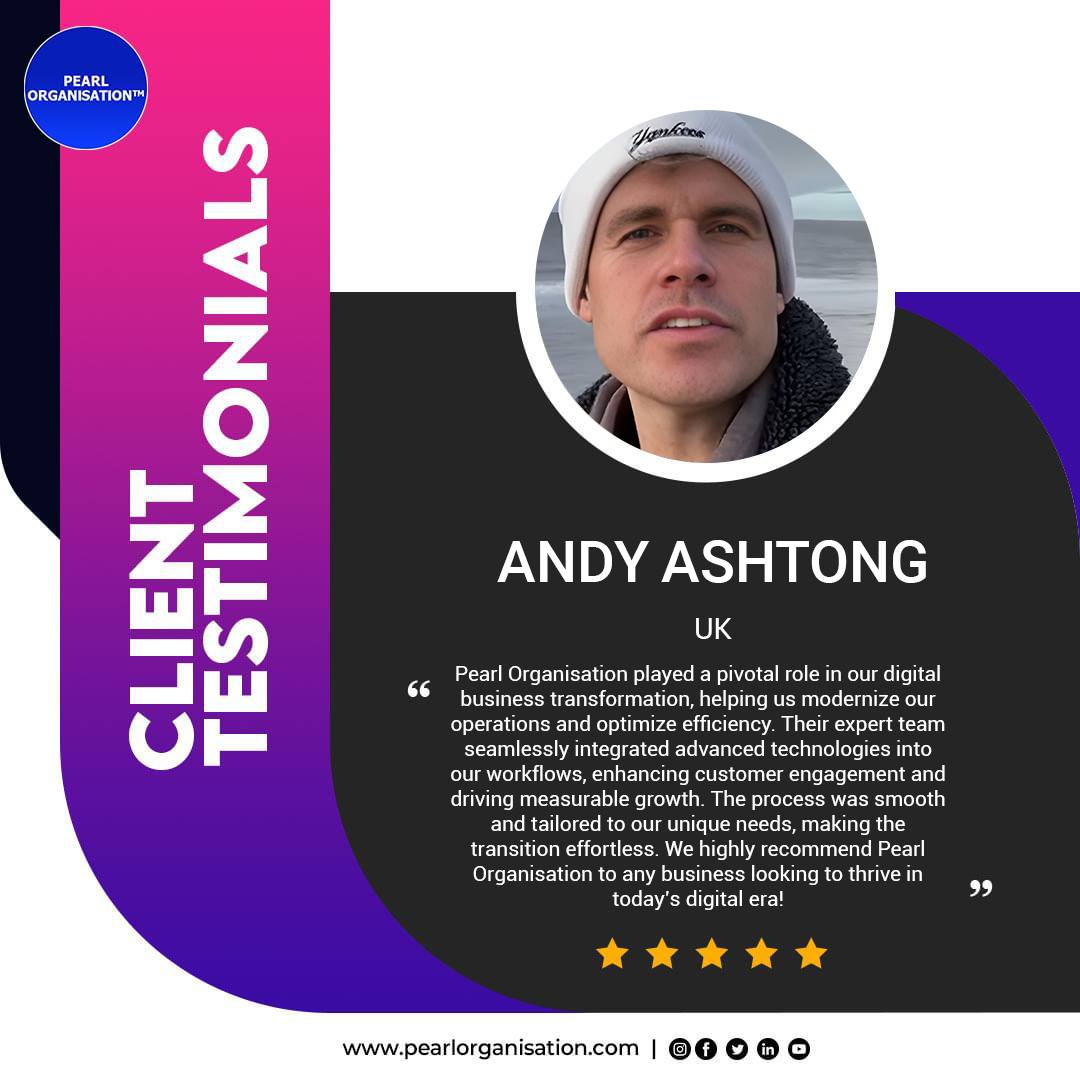AI Development for the Future: Turning Artificial Intelligence into a True Business Partner
- Larrisa
- Oct 10
- 26 min read

The Evolution of Artificial Intelligence: From Utility to Partnership
In the last decade, Artificial Intelligence has evolved from a futuristic concept to a ubiquitous force shaping every modern enterprise. Yet, despite its widespread adoption, most organizations still confine AI within the boundaries of a tool — something that automates repetitive tasks, accelerates calculations, or adds predictive capabilities to existing workflows. This perspective, while useful in the early stages of digital transformation, dramatically limits what AI can truly accomplish. The next great leap in business evolution will not come from treating AI as another component of technology infrastructure; it will come from treating AI as an active business partner — one that collaborates, learns, decides, and evolves alongside human leadership.
When AI is viewed merely as a tool, it functions reactively. It awaits instructions, performs designated tasks, and outputs results based on predefined parameters. For instance, a marketing automation engine that optimizes campaign timing, a recommendation system that predicts customer preferences, or a chatbot that responds to FAQs — all operate in isolated silos with specific, short-term goals. These implementations drive efficiency, but they do not transform the core of a business. They are peripheral enhancements, not strategic collaborators. The real transformation begins when AI transitions from being an implementer to becoming a thinker, from executing commands to co-authoring decisions, from operating as a servant to functioning as a trusted ally in shaping the enterprise’s direction.
Imagine a business ecosystem where AI doesn’t wait to be triggered but continuously observes, analyzes, and interprets the environment in real time — absorbing signals from customer behavior, market volatility, supply chain fluctuations, and even internal team performance. In this environment, AI ceases to be a support mechanism and instead becomes a participant in the decision-making table. It doesn’t just tell leaders what happened or what might happen next; it tells them what to do now — and why. This marks the genesis of AI as a business partner — an entity that contributes intelligence, foresight, and adaptability to the organization’s very DNA.
Businesses today operate in environments that are volatile, uncertain, complex, and ambiguous. Traditional decision-making models — driven by quarterly data, historical reports, and human intuition — cannot keep pace with this speed. AI as a tool helps close the gap partially by providing analytics and automation, but AI as a partner helps close it completely by embedding continuous learning loops that evolve as fast as the business landscape changes. The difference is subtle yet profound. A tool simplifies what already exists; a partner redefines what is possible. Where tools are deployed to serve processes, partners reshape processes to serve strategy. This distinction is where the real competitive advantage of the next decade will emerge.
To visualize this evolution, consider how most companies currently approach AI: they deploy a series of independent models across various functions — a forecasting engine in finance, a demand predictor in logistics, or an NLP chatbot in customer service. Each model produces value, yet none communicate meaningfully with one another. Decisions remain fragmented. AI, in this form, remains a disjointed set of instruments, not a unified intelligence. By contrast, when AI is reimagined as a partner, these systems are orchestrated into an ecosystem — a living digital organism that learns from every transaction, refines every process, and synchronizes every department toward shared goals. It acts not as a peripheral assistant but as an intelligent collaborator capable of shaping the trajectory of the organization.
This partnership approach fundamentally changes how businesses operate. Instead of executives making strategic plans and then asking AI to test or optimize them, AI becomes embedded in the strategy-formulation layer itself. It identifies emerging markets before analysts can detect them, evaluates competitive risks, simulates various operational scenarios, and continuously refines its understanding of how business decisions affect long-term sustainability. In manufacturing, it may act as a co-pilot for plant optimization; in finance, as a sentinel for predictive risk management; in retail, as an architect of hyper-personalized experiences; and in healthcare, as a guardian of precision medicine decisions. Across each domain, AI’s role expands from reactive to proactive, from functional to strategic.
But for AI to assume this elevated role, the organizational mindset must evolve first.
The company must stop viewing AI as a department or a project and start treating it as a core member of leadership logic. This shift is cultural as much as technological. It requires trust, transparency, and collaboration between human intellect and machine cognition. Executives must empower AI systems with autonomy to explore, predict, and recommend, while still establishing ethical boundaries and governance frameworks. This balance — between freedom and control — is the essence of the partnership model. When implemented effectively, AI doesn’t replace leadership; it magnifies it. It extends the reach of human intelligence, scaling judgment, intuition, and foresight across the enterprise.
The economic rationale for this transformation is equally compelling. Organizations that treat AI as a partner outperform their competitors not only in operational efficiency but also in resilience. Because AI partners learn continuously, they detect early warning signs — shifts in customer sentiment, irregularities in financial indicators, anomalies in supply logistics — long before human teams could notice them. This foresight allows organizations to respond before disruption becomes damage. In essence, AI becomes both the nervous system and the reflex mechanism of the enterprise. It perceives, processes, and acts — dynamically and intelligently — just as an experienced human strategist would, but at a scale and speed that no human can match.
Moreover, the partnership model amplifies human potential instead of diminishing it. The narrative that “AI will replace jobs” is outdated when AI is framed correctly. In a partnership ecosystem, AI handles complexity, data overload, and repetitive analytical tasks, while humans handle creativity, empathy, negotiation, and moral reasoning. The collaboration is not competitive; it is complementary. The more AI takes over cognitive load, the more humans can focus on purpose, innovation, and leadership. Together, they form a hybrid intelligence — one that blends the emotional depth of human thinking with the computational precision of machine reasoning.
From an infrastructural standpoint, building AI as a partner means re-architecting digital ecosystems so that AI can access, interpret, and act on real-time data. It requires interconnected data pipelines, predictive feedback loops, and self-optimizing mechanisms that ensure AI’s knowledge never stagnates. Governance models must evolve too — not to restrict AI but to make its reasoning transparent and accountable. An AI partner must be explainable, auditable, and aligned with the organization’s ethical and regulatory frameworks. Only then can trust mature from dependency to collaboration.
This is precisely the philosophy behind the AI Services and Solutions offered by Pearl Organisation, where Artificial Intelligence is designed not as a static software module but as a living ecosystem of intelligence that evolves with every business milestone. Their approach combines data analytics, AI agent development, and real-time decision orchestration to ensure that AI is not only a contributor but a co-pilot of growth. In Pearl’s ecosystem, AI becomes the voice that whispers insights to leadership, the analyst that interprets millions of signals in seconds, and the guardian that ensures every operational choice aligns with strategic intent. It is the invisible yet indispensable partner that transforms businesses from being reactive entities into proactive organisms.
The future of enterprise will not be led by those who merely use AI efficiently; it will be led by those who think with AI. Businesses that embrace AI as a partner will no longer measure success in terms of cost savings or productivity increments — they will measure it in intelligence compounding, the ability to make smarter, faster, and more contextually aware decisions with every passing cycle. This is the inflection point of modern innovation, and those who recognize AI as a collaborator rather than a commodity will define the next era of global business evolution.
Operationalizing Partnership: Turning Artificial Intelligence into an Active Force Within the Enterprise
Transforming Artificial Intelligence from a background tool into an active business partner is not an overnight upgrade; it is an architectural, cultural, and philosophical metamorphosis. It begins with a fundamental redefinition of how an organization understands intelligence itself. In traditional hierarchies, decision-making flows top-down — vision crafted by leadership, executed by technology, validated by metrics. But in the AI-partnered enterprise, decision-making becomes circular: intelligence flows omnidirectionally, with human and machine reasoning co-creating strategy in real time. The company ceases to be a linear entity and instead evolves into a living network of adaptive intelligence.
To operationalize this vision, the enterprise must first accept that AI is not a software license or a product — it is an ecosystem. It requires fertile soil in which to think, act, and evolve. That soil is composed of three inseparable elements: data infrastructure, organizational culture, and governance discipline. Without all three maturing simultaneously, AI cannot function as a business partner.
The first step is data integration. A tool-based AI can survive on fragments — a marketing dataset here, a CRM feed there — but a partner AI requires holistic awareness. It must see the organization as one organism, not as isolated departments. This requires breaking the silos that most companies unknowingly preserve. Data trapped inside marketing clouds, ERP systems, customer support tools, or finance ledgers must be liberated and unified through well-architected pipelines that translate complexity into clarity. Only when AI can access a continuously updated, high-quality, ethically managed data stream can it begin to reason beyond isolated predictions and toward holistic business judgment.
Yet, clean data alone does not create intelligence. The organization must establish an intelligent feedback architecture, one that allows AI to not only analyze but also learn continuously from the impact of its decisions. This is where many AI initiatives collapse — they deliver reports but never absorb the consequences of their recommendations. A true partner must evolve from experience. Every sales forecast it makes, every anomaly it detects, every recommendation it provides must loop back into its learning fabric. This closed feedback cycle transforms AI from a static predictor into a dynamic learner — a digital counterpart that grows in expertise with the business itself.
The second, and perhaps most underestimated, foundation is culture. To make AI an ally rather than a subordinate, human teams must be willing to engage with it as a collaborator. This requires dissolving both fear and overconfidence — fear that AI will replace them, and overconfidence that human intuition alone will always be superior. The most advanced enterprises cultivate what Pearl Organisation describes as a symbiotic decision culture — one in which human and machine cognition exist in mutual respect. Humans bring creativity, ethics, empathy, and contextual understanding; AI brings depth of data, pattern recognition, and scale. Together they form a partnership where human intention meets algorithmic precision.
For this partnership to flourish, leaders must redesign roles around collaboration with AI systems. Decision-making teams are no longer composed solely of executives and analysts; they now include AI models as participants. These models contribute insights, probability matrices, and scenario simulations, much like a human board member contributes financial acumen or operational expertise. In advanced settings, AI systems even hold symbolic “seats” at decision councils — an emerging trend in forward-thinking organizations where model-generated insights are presented with the same weight as human recommendations. This symbolic inclusion represents a cultural evolution: AI is not an accessory to strategy; it is one of its co-authors.
Another crucial step in operationalizing AI partnership lies in embedding autonomy — not total autonomy, but structured autonomy governed by trust and control. Many enterprises hesitate to let AI take action without human approval, but a well-governed AI partner should be capable of executing defined micro-decisions independently. Consider dynamic pricing engines, real-time supply chain optimization, or fraud-prevention systems: here AI decisions occur in milliseconds, far faster than human reaction could ever allow. These decisions are not isolated; they are made within transparent boundaries designed by humans, monitored through explainable algorithms, and continuously refined. Autonomy in this context does not mean absence of control; it means presence of trust through predictability and ethical guardrails.
The governance layer becomes the contract of this partnership. Just as human executives are accountable for ethical, financial, and legal decisions, AI systems must operate within clearly defined accountability frameworks. Every decision an AI partner makes — from customer personalization to operational recommendations — must be explainable, traceable, and reversible. Explainability, once a technical concern, becomes a cultural necessity. Without it, trust erodes; with it, partnership flourishes. This is why the Pearl Organisation emphasizes “governed intelligence” in every AI deployment. Their philosophy insists that transparency, audit trails, and human oversight are not constraints on AI, but enablers of its credibility.
Beyond data and governance lies the third dimension — integration at the process layer. This is where AI partnership becomes tangible. When AI is a tool, it sits in dashboards. When it is a partner, it lives in workflows. It no longer waits for data scientists to extract insights or for managers to interpret dashboards; it actively interacts with ERP modules, CRM transactions, marketing automation, and supply chain logistics in real time. A true partner AI doesn’t just generate insights; it executes them, monitors outcomes, and recalibrates instantly. It becomes part of the operational nervous system — embedded directly within APIs, microservices, and decision engines that sustain the enterprise.
This deep integration also changes the nature of leadership. Executives can no longer treat AI reports as “inputs” to their thinking; instead, they must treat AI conversations as collaborative dialogues. Modern AI partners — powered by generative reasoning and multimodal intelligence — can explain not only what they recommend but also why they recommend it. They can run thousands of simulations simultaneously, quantify trade-offs, and propose strategies that human teams can debate and refine. Leadership thus transitions from instructing technology to negotiating with intelligence. This marks a profound change in the psychology of corporate decision-making — one where humans and machines co-create consensus.
To operationalize this in a sustainable manner, organizations need a robust AI operating model — one that defines responsibilities, workflows, and oversight across both human and machine layers. In Pearl Organisation’s model, this involves establishing “AI-decision loops” within each function. For example, in finance, AI might continuously monitor expense streams, detect anomalies, and propose corrections. In HR, it may predict attrition risk and suggest retention strategies. In marketing, it may autonomously test content variants, predict emotional resonance, and adjust campaigns based on real-time engagement. In every case, the AI is not just executing algorithms but engaging in collaborative logic — interpreting context, refining strategy, and sharing accountability for outcomes.
However, this operational maturity cannot be achieved without infrastructure elasticity. The enterprise must be capable of handling exponential computation, storage, and orchestration demands that intelligent agents generate. Cloud-native architectures, edge computing, and hybrid deployment models make this elasticity possible. AI partners thrive on distributed computing — they operate across multiple environments, analyzing billions of data points in parallel. Pearl Organisation’s cloud and AI convergence framework allows enterprises to run intelligent agents securely, whether in private clouds, hybrid stacks, or multi-tenant architectures. The aim is to ensure that intelligence is omnipresent — accessible everywhere, scalable at will, and responsive in real time.
At the same time, security cannot be an afterthought. As AI becomes a decision-maker, it inherits responsibility for data ethics and cybersecurity. Every model must be trained and governed under zero-trust frameworks, with strict access control, anonymization of sensitive information, and automated compliance enforcement. This ethical infrastructure ensures that the AI partner acts not only intelligently but responsibly.
Once this ecosystem — composed of data unification, cultural adaptation, governance discipline, process integration, and infrastructure resilience — is established, AI ceases to be an abstract promise and becomes a living collaborator. It listens, it learns, and it speaks the language of business fluently. It understands not only numbers but also outcomes. It evolves from answering questions to asking the right ones. It stops reporting the past and begins anticipating the future.
This is where the philosophy of Pearl Organisation becomes pivotal. Their AI Services and Solutions platform was built on the belief that intelligence must be participatory — not a one-way delivery of insights, but an ongoing conversation between humans and machines. Every deployment is designed as a collaboration: AI learns from business dynamics, while the business learns from AI reasoning. This relationship is constantly nurtured through adaptive learning, behavioral modeling, and real-time integration across departments. The outcome is a business that does not simply use AI but thinks through AI — a living enterprise that grows wiser with every decision it makes.
In essence, operationalizing AI as a business partner means accepting that intelligence itself is no longer an exclusive human asset. It is a shared capability — a partnership of cognition that blends analytical precision with creative ambition. The organizations that understand this will not just automate; they will accelerate. They will not merely react to change; they will predict it, adapt to it, and ultimately shape it. They will lead not by having more data, but by having a deeper relationship with the intelligence that interprets it. And in that partnership lies the defining edge of the modern digital enterprise.
The Partnership in Action: How AI Rewrites Industries, Not Just Processes
1. The Industry Revolution Beyond Automation
Once Artificial Intelligence crosses the threshold from automation to partnership, industries stop merely adopting technology — they begin co-evolving with it. In this era, competitive advantage is no longer built on assets, distribution, or even human talent alone; it is built on the intimacy of collaboration between human reasoning and machine cognition.
Each industry that embraces AI as a partner discovers a different dimension of capability — predictive foresight in finance, adaptive efficiency in manufacturing, empathetic personalization in healthcare, precision in logistics, and creative intelligence in marketing. Together, these fields demonstrate that the partnership model is not theoretical; it is operational, measurable, and irreversible.
2. Finance: The Rise of Cognitive Risk Management
In the financial sector, traditional risk management relies on historical data and linear forecasting. But markets today are complex, multi-factorial organisms where sentiment, geopolitics, and micro-behaviors change value faster than human analysts can react.
When AI functions as a partner, it doesn’t just generate risk scores — it co-manages the portfolio, learning the behavioral rhythm of every market instrument in real time.
AI models in this domain collaborate with human analysts like seasoned colleagues. They detect subtle correlations across billions of signals — fluctuations in commodities, social-media sentiment, policy announcements — and proactively flag risks long before spreadsheets reveal them.
For banks and fintech companies working with frameworks like those designed by Pearl Organisation’s AI Analytics Engine, such intelligence becomes the financial nervous system of the enterprise. Decisions once made monthly can now be made every millisecond, allowing institutions to balance aggression with prudence, and compliance with innovation.
The result is not an algorithm managing capital; it is an AI co-strategist helping define when to act, when to wait, and when to protect.
3. Healthcare: From Reactive Care to Predictive Well-Being
Few sectors illustrate the potential of partnership better than healthcare. When AI is treated as a tool, it supports diagnostics or manages records. When treated as a partner, it participates in saving lives.
Imagine a system that continuously studies patient histories, wearable data, genetic markers, and environmental variables — not just to detect disease but to anticipate it.
Hospitals leveraging partner-grade AI platforms integrate clinical data pipelines, imaging analytics, and real-time monitoring into a single cognitive layer. This allows doctors and algorithms to co-diagnose: the physician interprets nuance, empathy, and context, while AI processes billions of medical precedents in seconds.
The partnership accelerates detection of anomalies, personalizes treatment plans, and reduces human error, resulting in a new paradigm — predictive medicine.
Pearl Organisation’s AI solutions apply the same principle to digital health applications: continuous monitoring, privacy-compliant data analysis, and intelligent triage. The aim is not to replace clinicians but to amplify their vision — turning reactive healthcare systems into preventive, adaptive ecosystems of well-being.
4. Manufacturing: The Cognitive Factory
Manufacturing has long been the testing ground for automation, yet automation alone has limits. Conveyor belts move faster; robots weld with precision — but without intelligence, efficiency plateaus.
An AI partner transforms the production line into a thinking ecosystem.
Sensors feed real-time performance metrics into AI systems that don’t just alert engineers when a fault occurs; they predict the exact moment of failure days in advance. These AI partners learn the heartbeat of every machine — the vibration frequency, the thermal pattern, the acoustic resonance — and forecast anomalies the human ear or eye cannot detect.
When paired with enterprise-grade ERP platforms (like those enhanced by Pearl Organisation’s AI Integration Framework), AI doesn’t merely maintain efficiency; it redefines productivity by scheduling maintenance dynamically, optimizing resource allocation, and minimizing energy waste.
The factory thus evolves from a place of repetition into a living organism of continuous learning — where every machine, worker, and algorithm collaborates in symphony.
5. Retail & Marketing: Empathy at Scale
In marketing, AI as a partner introduces something profoundly human — empathy.
Traditional marketing tools target demographics; AI partners understand individuals. By combining behavioral analytics, emotion detection, and contextual data, they learn the pulse of each customer journey.
Rather than broadcasting uniform campaigns, AI co-creates narratives with marketers, predicting what customers will need, when they will need it, and why they will care. For instance, a retail brand empowered by Pearl Organisation’s AI Engagement Suite doesn’t simply automate promotions — it conducts micro-dialogues with consumers across channels. The system tests variations of tone, timing, and imagery, learning emotional resonance over time.
The outcome is a shift from customer segmentation to customer symbiosis — a state where marketing becomes conversation, and every interaction builds loyalty through relevance.
6. Logistics & Supply Chain: The Predictive Pulse of Movement
The global supply chain — once linear and brittle — now demands fluidity, foresight, and precision.
An AI partner thrives here because logistics is fundamentally a problem of prediction: predicting demand, predicting disruption, predicting delivery routes.
Modern AI systems embedded into logistics frameworks operate like air-traffic controllers for commerce. They analyze weather data, port congestion, driver availability, and global events, adjusting delivery strategies in real time.
When integrated with the orchestration architecture designed by Pearl Organisation, these systems synchronize across warehouses, carriers, and retailers — reducing downtime, optimizing routes, and eliminating redundancy.
What emerges is a self-correcting ecosystem, where supply chains no longer react to disruption; they anticipate it. Each shipment becomes an intelligent entity, contributing data back into the network and helping the system grow smarter with every mile.
7. Education & Knowledge Economies: The AI Mentor
In the knowledge economy, learning is perpetual — but the way knowledge is distributed has lagged behind its pace of creation. AI, when elevated to partnership, becomes an educator as well as a student.
Adaptive learning systems analyze cognitive patterns of individual learners, adjusting pace, complexity, and context dynamically. Over time, the system evolves into a mentor that understands how each mind learns best.
Pearl Organisation’s work in AI-driven education platforms demonstrates this beautifully: learning experiences are no longer mass-produced but co-authored between learner and machine. The AI tracks comprehension, emotional engagement, and recall, refining its teaching style accordingly.
The outcome is a form of personalized education once thought impossible — a partnership where human curiosity meets algorithmic patience.
8. The New Standard of Industry: Intelligence as Infrastructure
Across all these verticals, a single pattern emerges: when AI becomes a business partner, intelligence itself becomes infrastructure. It ceases to be a module bolted onto existing systems and instead becomes the foundation on which industries operate. In this paradigm, data pipelines are not back-office functions; they are arteries. Algorithms are not projects; they are employees. Insights are not occasional; they are continuous. The enterprise breathes intelligence as naturally as it breathes revenue.
This transformation redefines success metrics. Organizations begin measuring “intelligence ROI” — not just financial gain, but how effectively AI contributes to decision speed, market agility, and innovation rate.
Companies that achieve this balance create something extraordinary: a compound advantage of learning, where every operation today makes the entire system smarter tomorrow.
9. Pearl Organisation’s Role in Shaping the Partnership Economy
Pearl Organisation has consistently advocated that the next industrial era will be defined not by who automates fastest, but by who collaborates deepest. Their AI Services and Solutions ecosystem — encompassing AI Integration, Generative AI, Agent Development, and Predictive Analytics — is built around this very doctrine.
Rather than deploying pre-trained systems, Pearl engineers AI that evolves within the client’s operational context. The result is not a product but a relationship of intelligence.
Each implementation is treated like a partnership — the enterprise provides data, objectives, and cultural nuance; Pearl’s AI responds with insight, adaptability, and learning capacity.
Together, they co-create a cognitive backbone that doesn’t just solve problems — it defines how future problems will be approached, understood, and solved faster than ever before.
10. Toward the Intelligence Renaissance
As industries converge around digital ecosystems, the AI partnership model heralds what many analysts now call the Intelligence Renaissance — an era where creativity, empathy, and computation coexist harmoniously.
The companies that thrive will be those that recognize intelligence as a shared resource — one cultivated, not consumed.
In this renaissance, every algorithm is an apprentice, every decision is a dialogue, and every business is a living organism of thought. The partnership between human and artificial intelligence will not only reshape industries but redefine what it means to lead, to create, and to grow.
And it begins the moment an organization stops asking, “What can AI do for us?”
and starts asking, “What can we become with AI by our side?”
The Future Blueprint of Collaborative Intelligence
1. The Dawn of Symbiotic Enterprises
The transformation of AI from a technical instrument into a business partner signals the emergence of what we may call the symbiotic enterprise — a living organization where human cognition and artificial intelligence merge to form a single decision-making entity. This new model is not defined by automation or digitalization alone, but by co-evolution. Humans and machines no longer exist in a hierarchy; they exist in reciprocity. The enterprise becomes a dialogue, not a structure — a system of thought, constantly negotiating between data, intuition, and ethics.
In such an ecosystem, AI does not reside in the IT department or the analytics team. It resides everywhere — in every process, every product, every conversation, and every decision. It perceives the company not as a series of operations, but as a network of living signals — continuously observing, predicting, and adjusting to the rhythm of markets and people alike.
This is the future Pearl Organisation envisions through its AI Services and Solutions framework — a future where AI ceases to be a supporting actor and becomes an equal stakeholder in shaping business destiny.
2. From Intelligence to Awareness: The Next Leap
Most enterprises today operate at the level of intelligence — the ability to analyze, calculate, and respond to events. But the next decade will see organizations evolve toward awareness — the ability to understand context, interpret purpose, and anticipate change before it manifests.
This is not science fiction; it is the natural progression of machine learning fused with human insight.
An AI partner operating within an aware enterprise will not only track KPIs or performance metrics; it will sense emotional tone in customer communication, detect fatigue in supply-chain systems, recognize opportunity in emerging patterns, and even forecast organizational morale.
Such awareness demands that AI systems evolve beyond numerical reasoning toward semantic cognition — an understanding of meaning. Through generative modeling, reinforcement learning, and context-driven analytics, AI will be capable of translating business language into strategic intuition.
This means that in the near future, a CEO won’t merely ask AI for reports; they will hold conversations with AI about direction, opportunity, and risk — conversations as sophisticated as those they have with human executives.
Pearl Organisation’s vision aligns precisely with this direction. Its AI architectures are designed to sense, interpret, and respond across multi-modal inputs — voice, data, documents, human intent — creating systems that feel less like software and more like thinking companions.
3. Building the Cognitive Fabric: Technology as the Mind of the Enterprise
The infrastructure of tomorrow’s enterprise will be cognitive by design. Instead of treating AI as an overlay to legacy systems, future-ready companies will build from AI outward — designing architectures that think, learn, and communicate organically.
This cognitive fabric will be made up of three interlocking layers:
The Neural Layer (Data & Connectivity) – The foundation where unified data pipelines, IoT sensors, and digital twins feed continuous information streams. It forms the sensory system of the organization, mirroring how human perception gathers input from the world.
The Cognitive Layer (Reasoning & Learning) – Here, AI models interpret signals, generate hypotheses, and adapt to feedback loops in real time. This layer learns patterns and context, forming the enterprise’s analytical brain.
The Conscious Layer (Decision & Ethics) – The final layer, where machine decisions align with human values. This is where Pearl Organisation’s principle of Human-in-the-Loop Governance becomes essential — ensuring that every autonomous decision remains ethically grounded and traceable.
Through this tri-layered model, organizations will possess machine consciousness at scale — not sentience, but synchronized awareness of everything that matters across finance, operations, customer experience, and innovation. The enterprise itself becomes a meta-intelligent organism — able to adapt, converse, and grow continuously.
4. Governance, Ethics, and Trust: The Human Anchor in a Machine World
As AI assumes a deeper role in decision-making, the moral compass of enterprise intelligence must be explicitly designed, not assumed. When algorithms shape hiring, pricing, lending, or healthcare recommendations, they wield social and economic power. The question is no longer can AI decide? but should AI decide, and under what guidance?
Pearl Organisation’s approach to governance is rooted in a philosophy called “Ethical Autonomy” — the belief that AI systems should act independently only when they can explain their logic, measure their bias, and respect human dignity.
In practice, this means every Pearl-engineered AI model is bound by layers of ethical protocols:
Real-time explainability dashboards that visualize reasoning patterns.
Bias-auditing pipelines that constantly scan for disproportionate impact.
Accountability frameworks that tag every autonomous action with human review metadata.
By building transparency into the architecture, AI ceases to be a “black box.” It becomes an open window — clear, traceable, and trustworthy. This ethical foundation is what allows the partnership between humans and AI to remain sustainable, humane, and legally resilient in an age of increasing algorithmic governance.
5. The Economic Horizon: Intelligence as Capital
Just as the industrial age defined capital in terms of machinery and the digital age in terms of data, the coming decade will define capital in terms of intelligence. Enterprises will no longer be valued solely for their assets or user bases but for their capacity to learn, predict, and adapt faster than competitors. This is the era of Intelligence Capital (IC) — the accumulated value of human knowledge amplified by machine cognition.
Pearl Organisation has long recognized this shift. Every AI deployment it undertakes is designed not only to improve operations but to compound intelligence over time.
Every decision made by an AI system feeds the next decision; every insight adds to an expanding knowledge graph that belongs to the enterprise. This compounding intelligence, measured through speed of learning and accuracy of adaptation, becomes the most defensible asset a company owns. It is portable, scalable, and perpetual — a self-multiplying form of capital that continues to grow even when traditional resources are exhausted.
6. Global Collaboration and the Era of Digital Empathy
AI as a partner is not confined to corporate strategy; it becomes a force of global collaboration. Imagine international teams connected by intelligent agents that translate nuance, tone, and culture seamlessly across languages and contexts. Imagine AI systems capable of mediating negotiations, resolving conflicts, and fostering inclusion by detecting emotional misalignment before it becomes tension.
This is what digital empathy means in the age of partnership — AI systems not just understanding data, but understanding people. Pearl Organisation’s global projects already embody this principle through multilingual AI assistants, emotion-aware analytics, and cross-cultural learning models that help businesses operate with compassion as well as precision. When empathy becomes measurable, organizations evolve from being efficient to being emotionally intelligent — an essential advantage in the human-centric markets of the future.
7. The Human Renaissance: Creativity Reclaimed
A paradox lies at the heart of AI partnership: the more intelligent machines become, the more space humans regain for creativity. As routine analysis, forecasting, and optimization are delegated to AI partners, human energy is liberated for imagination, design, and invention. We enter what many thinkers call the Human Renaissance of the Digital Era — a return to creativity, purpose, and emotional depth, powered by AI infrastructure that handles complexity invisibly in the background.
Pearl Organisation envisions this symbiosis as the true goal of transformation. Technology is not meant to dominate; it is meant to elevate. The company’s AI-first design philosophy insists that every system it builds must expand the human capacity to think, to dream, and to build — not diminish it. In this balance between analytical perfection and creative imperfection lies the essence of what makes both humans and machines extraordinary.
8. The Decade Ahead: A Vision for the AI-Empowered Enterprise
As we look toward the horizon of 2035 and beyond, the enterprises that dominate will share common DNA: adaptability, transparency, purpose, and intelligence. They will operate on ecosystems like those Pearl Organisation is shaping today — AI-infused architectures that are ethical, interpretable, and endlessly self-improving.
In this vision:
Every business process will be augmented by conversational intelligence.
Every product will contain an intelligent agent capable of evolution.
Every customer relationship will be sustained through empathy analytics.
Every strategy will be co-authored by human intuition and machine foresight.
The organization of the future will therefore not compete on speed or scale alone, but on quality of thought — how intelligently, ethically, and beautifully it integrates AI into its soul.
9. Pearl Organisation’s Commitment to a Smarter Planet
At the heart of Pearl Organisation’s mission lies a conviction: intelligence must serve humanity, not overwhelm it. Through its AI Services and Solutions division, the company champions an ecosystem where technology is accountable, creativity is encouraged, and progress is shared. From AI agent development to generative reasoning platforms, from decision-intelligence frameworks to digital empathy analytics, Pearl’s goal remains singular — to create a smarter, fairer, and more conscious digital world.
Their journey across 150 countries, 18 000+ projects, and a 96 % global success rate is not merely a record of service delivery; it is a chronicle of learning. Each project adds another layer to the organisation’s intelligence capital, refining how humanity and AI can coexist productively.
For Pearl Organisation, AI is not a service. It is a shared destiny — a path toward a planet where every organization, from startups to governments, can think intelligently, act responsibly, and innovate sustainably.
10. Conclusion: The Age of Shared Intelligence
The story of AI’s evolution is no longer about tools, technologies, or trends. It is about relationships. When businesses learn to treat intelligence as a companion — not a commodity — they unlock a new era of creativity, agility, and purpose.
This is the age of shared intelligence — where human potential meets algorithmic clarity, where empathy meets precision, and where imagination meets mathematics. And in that intersection lies the promise of every innovation Pearl Organisation builds: a future where AI doesn’t replace us — it represents us, where machines don’t overshadow our humanity — they illuminate it.
Frequently Asked Questions
1. What does it mean to treat AI as a business partner instead of a tool?
Treating Artificial Intelligence as a business partner means integrating it into the strategic, operational, and decision-making layers of an organization rather than using it for isolated automation.
When AI functions as a partner, it co-creates strategy — analyzing data in real time, predicting future scenarios, and offering actionable insights to leadership teams.
Unlike a tool that performs predefined tasks, a partner AI continuously learns, adapts, and collaborates with human intelligence. Pearl Organisation’s AI Services are built on this philosophy, where AI becomes a thinking collaborator — participating in decision cycles, improving over time, and aligning every process with measurable business outcomes.
2. How can AI partnership improve decision-making within enterprises?
AI enhances decision-making by combining machine precision with human judgment. A partner AI continuously processes real-time data from finance, operations, customer behavior, and external markets to reveal insights that human teams could never detect at scale. For instance, Pearl Organisation’s AI Decision-Intelligence Framework integrates predictive analytics, generative reasoning, and reinforcement learning, allowing executives to simulate outcomes and test strategies before committing resources. This results in faster, evidence-driven decisions that are not just efficient but also adaptive to changing market dynamics — a core trait of future-ready enterprises.
3. What infrastructure does a company need to make AI an effective partner?
Transforming AI into a strategic partner requires three layers of readiness — data, technology, and governance. A unified data pipeline ensures that AI has access to accurate, real-time information; scalable cloud or hybrid architecture provides the computational power to analyze it; and a strong governance framework ensures transparency and ethical control. Pearl Organisation designs this foundation through its AI Integration & Cognitive Infrastructure Services, creating a secure ecosystem where data, models, and workflows are connected seamlessly. This structure allows AI systems to think holistically, ensuring that the enterprise’s intelligence ecosystem evolves continuously rather than stagnating after deployment.
4. How does Pearl Organisation ensure transparency and ethics in AI deployment?
Pearl Organisation implements a principle called Ethical Autonomy, which ensures that every AI model operates within a framework of accountability, fairness, and explainability. Each decision made by an AI system is logged, traceable, and auditable through real-time dashboards. Automated bias detection, compliance auditing, and human-in-loop monitoring prevent unfair or opaque actions. In industries such as healthcare, finance, and public services — where ethical clarity is essential — this governance layer allows organizations to deploy AI responsibly while maintaining complete stakeholder trust.
5. What are some real-world examples of AI as a business partner?
AI partnership is already redefining multiple industries:
Finance: Cognitive systems that advise on portfolio risk and liquidity in real time.
Healthcare: Predictive AI models that collaborate with doctors to anticipate diseases before symptoms surface.
Manufacturing: Smart factories that use machine-learning agents to predict failures and self-optimize production.
Marketing: AI platforms that personalize experiences based on emotional resonance and behavioral patterns.
Logistics: Real-time route optimization and disruption forecasting through autonomous data orchestration.
Pearl Organisation has implemented each of these models within client ecosystems across 150+ countries — turning data into decision capital and machines into partners of progress.
6. How does the AI partnership model benefit human employees?
Far from replacing human talent, AI partners amplify human potential. By taking over data-heavy, repetitive, or time-sensitive tasks, AI allows professionals to focus on creativity, empathy, strategy, and innovation — the areas where human cognition is irreplaceable. This transition transforms job roles: analysts become interpreters, managers become visionaries, and teams become strategic collaborators with technology.
Pearl Organisation emphasizes “human-in-command” workflows where AI acts as an assistant, not a replacement — ensuring that people remain the central architects of intelligence.
7. How can small and mid-sized businesses adopt AI as a partner?
Many SMEs believe AI partnership is exclusive to large corporations, but modern cloud-native AI frameworks have made intelligent systems accessible and scalable for all.
Pearl Organisation’s modular AI solutions allow smaller enterprises to start with specific functions — like predictive sales forecasting, customer sentiment analysis, or intelligent process automation — and gradually expand into full partnership ecosystems. These systems learn with the business, adapting to new data and operational realities, making AI a practical, affordable, and growth-centric ally rather than a luxury investment.
8. What distinguishes Pearl Organisation’s AI Services & Solutions from other providers?
While many providers focus on building AI products, Pearl Organisation builds AI ecosystems. Every deployment is personalized, context-aware, and aligned with client goals through continuous learning and adaptive governance. The company integrates data science, generative AI, automation, and cloud infrastructure into a single symphonic model where technology and business strategy evolve together. Its global recognition — 18,000+ projects, 10,500+ clients, 150+ countries, and a 96% success rate — reflects not only technical excellence but the organization’s philosophy of intelligence as partnership, not service.
9. What industries will see the greatest transformation through AI partnership by 2030?
By 2030, industries that rely heavily on prediction, personalization, and complex logistics will see the most radical change. Healthcare will evolve toward continuous monitoring and predictive wellness; manufacturing will become self-healing and autonomous; retail will shift into individualized experiences; finance will be powered by real-time cognitive markets; and education will become personalized through AI mentorship systems. Pearl Organisation’s ongoing R&D in these sectors positions it as a global catalyst for AI-driven digital transformation, guiding enterprises through the transition from automated processes to intelligent ecosystems.
10. What is Pearl Organisation’s long-term vision for AI in business?
Pearl Organisation envisions a world where AI becomes the shared language of global enterprise — a medium through which ideas, data, and human creativity converge seamlessly. Its long-term roadmap extends beyond efficiency into consciousness: building systems that understand context, reason ethically, and evolve alongside humanity. By 2035, the company anticipates enterprises operating as Cognitive Networks — organizations where every employee, customer, and algorithm collaborates in real time through intelligent agents. Pearl Organisation’s commitment is not just to innovation, but to creating a smarter, fairer, and more empathetic digital planet — where technology elevates life, and intelligence is shared, not siloed.


























